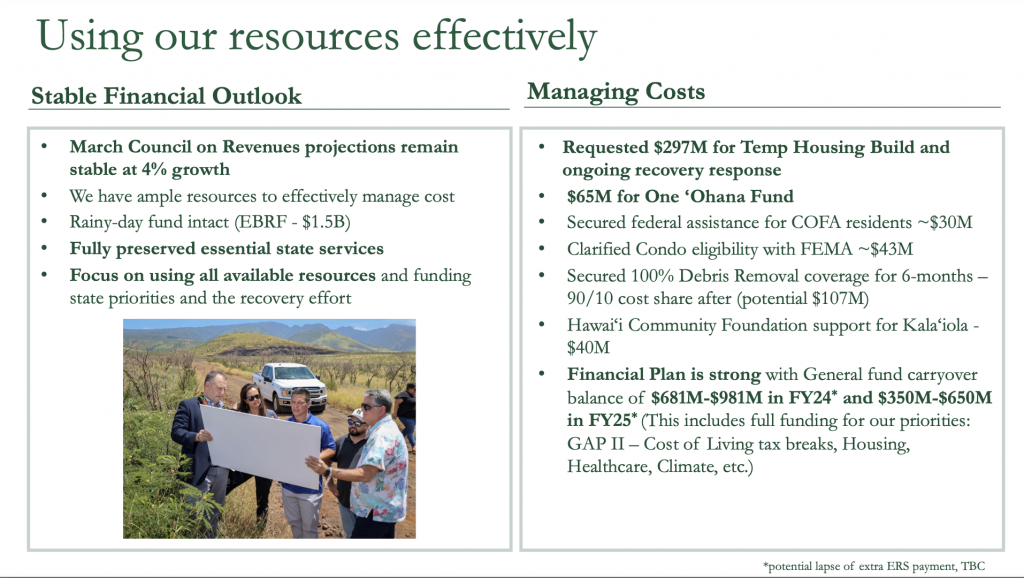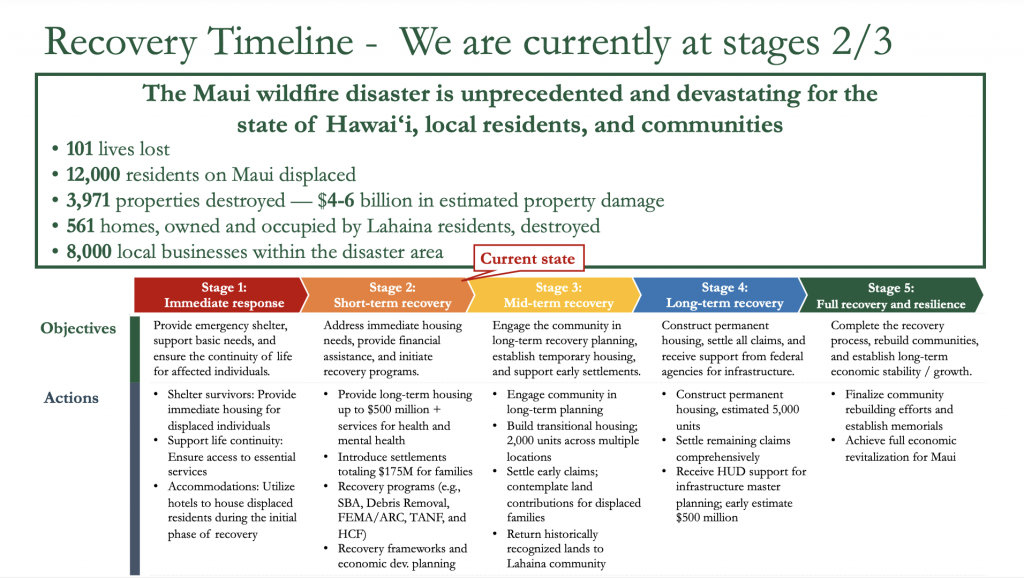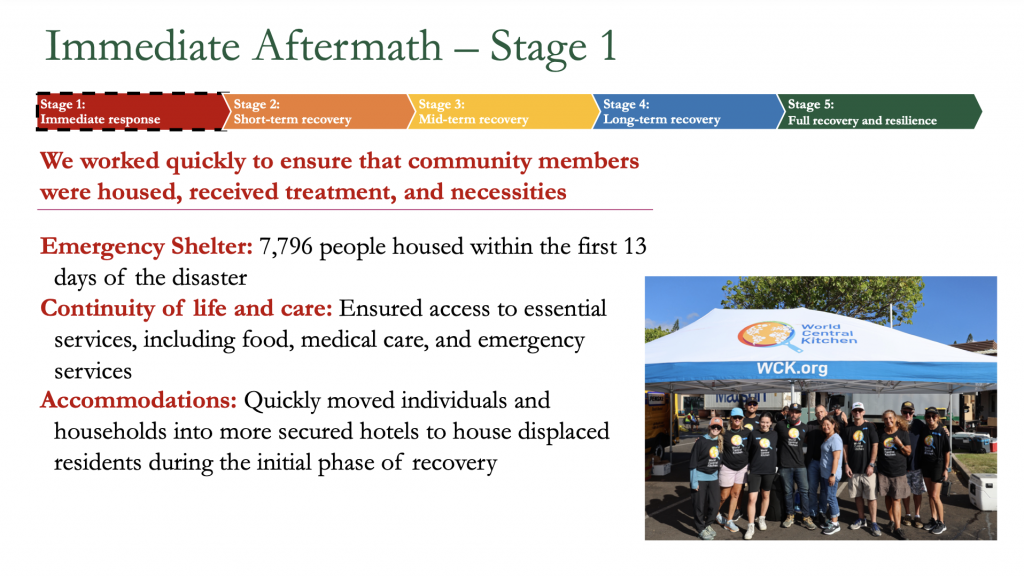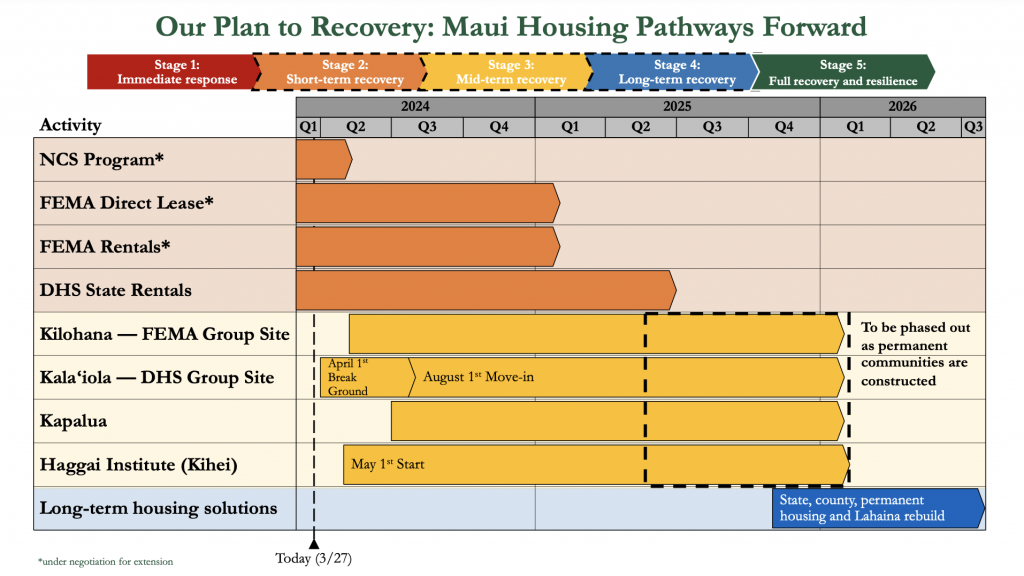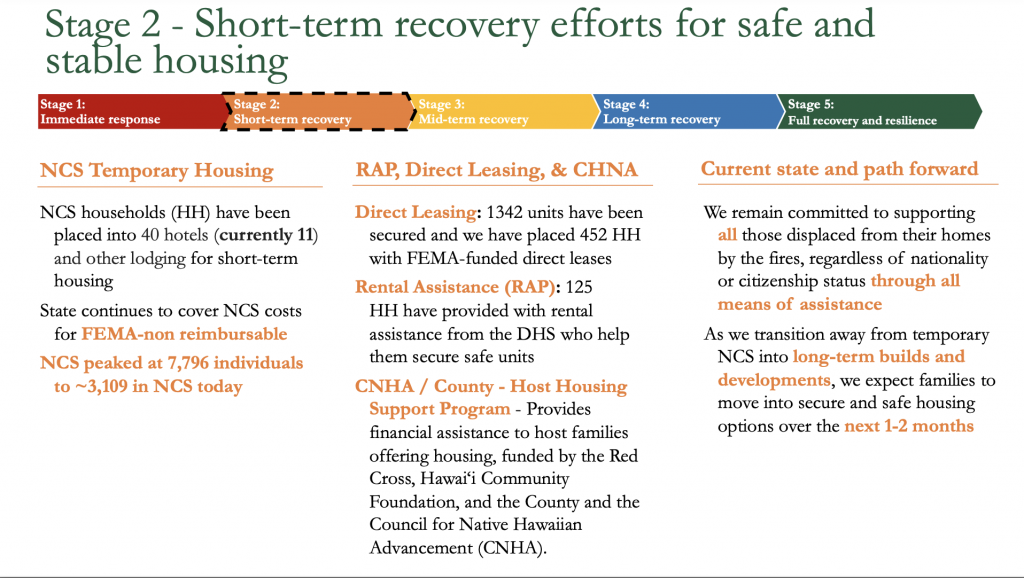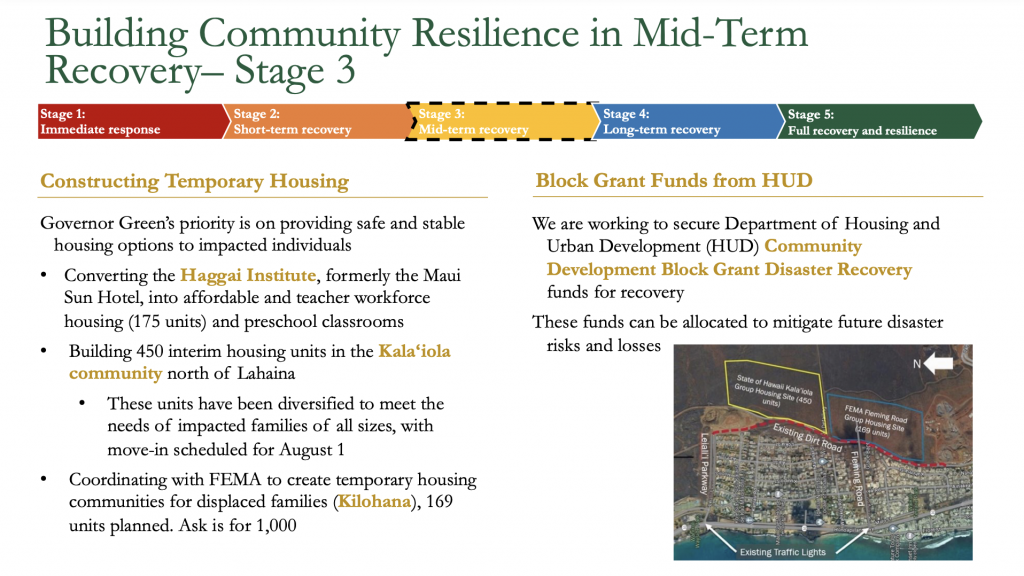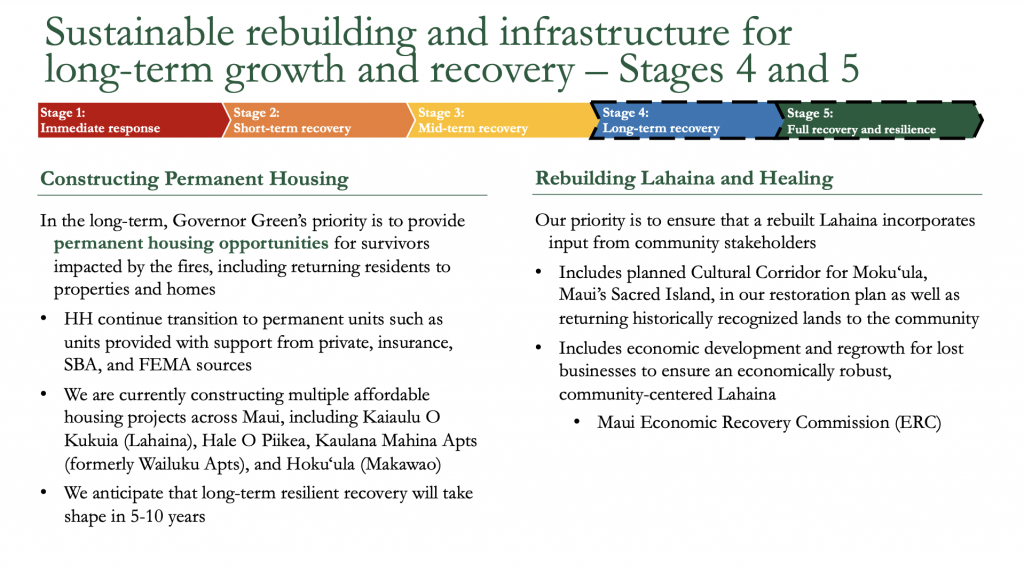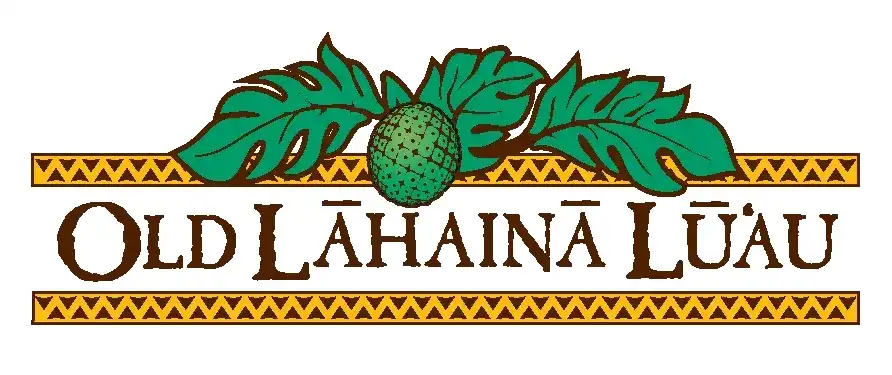Gov. Green decides against STR moratorium; hopes to have all wildfire displaced Maui residents out of hotels by July 1

With more than 3,000 wildfire displaced residents on Maui still living in hotels, Gov. Josh Green says there are enough units now available through rental and direct lease programs that he expects to have the remaining residents transitioned out to longer-term solutions by July 1, 2024.
In a press conference Wednesday morning at the state Capitol, focused on housing solutions, the governor announced a decision against a moratorium on short-term rentals saying there are enough units now to house wildfire survivors.
“We’re trending towards full occupancy outside of the hotels by July 1. That’s when we believe everyone will be moved out,” said Gov. Green.
“We have over 1,300 contracts available to us and now we’ve [to] dropped under 1,300 households—so we, in a perfect world, could get everyone there,” said Gov. Green. He did say that as a buffer, the state would maintain contracts with one or two hotels at a much more affordable rate for extreme circumstances.
“We also will encourage local hotels—if they want to house some of their employees, and if they have space to do it, because it might be in their interest to have workforce there on site,” said Gov. Green.
There is currently a policy in place where survivors have no less than four opportunities to choose a long-term solution, and they are allowed to appeal an additional two times.
“A lot of people have been offered an apartment/housing and have rejected it because it’s too far away from West Maui or it didn’t suit their family circumstance,” said Gov. Green. “We’ve tried to be incredibly understanding because we don’t want to additionally disrupt people’s lives.”
During his presentation, Gov. Green highlighted the successes achieved in constructing housing, reopening school facilities, and increasing federal engagement. The governor also updated the state on its progress on shifting more than 60% of impacted families into long-term housing (down to 3,109 individuals from 7,796 people following the Aug. 8 disaster), negotiating $220M in potential savings with federal counterparts, improving state carryover balances, and continuing to construct short- and long-term units and public facilities for communities.
At the current rate, Gov. Green said 25-30 people per day are moving out of hotels into long-term housing.
Transitional housing units as outlined as part of Phase 3 of recovery plan includes mid-term housing at Leialiʻi with the Kilohana FEMA Group Site, 450 units at the Kalaʻiola DHS Group Site, 50 units at Kapalua, and 175 units at the Haggai Institute in Kīhei. These units will be phased out as permanent communities are constructed.

Gov. Green emphasized that his administration is committed to working with partners across all counties to crack down on illegal listings engaging in deceptive acts and practices. He said the focus is on West Maui right now because that’s where the need is the greatest.
Over time, Gov. Green said he wants to incentivize people to sell back to the state of Hawaiʻi. “My personal belief is we should enact legislation that is a lot like what they did in New York State, which is you have to be on the premises or in the region—therefore, you’re a local family. We support local families to do short-term rentals if they’re doing them legally; but we don’t support mainland folks making a ton on money while our people are trying to find housing after a fire,” said Gov. Green, noting that some owners are making about 400% of a regular rental rate.
A small overture this session was in the form of tax exemptions for those who transition out of the short-term market. “Amnesty is the way we described it. We’ll see if that legislation passes—but tax amnesty is the carrot, and the stick would be if you’re violating the laws, ultimately you lose your property. That’s the [most] severe consequence,” said Gov. Green.
“Let’s see where we land, but I’ll tell you with 89,000 short-term rentals in our state and 75,000 of them being illegal, there’s your housing solution. Bring those 75,000 units into the circulation of our population, then we can build in a normal fashion and we can have a solution on our housing shortage. Expect us to be extremely firm next session with our proposals about transitioning to local ownership,” said Gov. Green.
The governor has entered into an agreement with the federal government to do a study on housing that the expects back in late April. He said he expects the study to demonstration the need to build an additional 1,000 houses from the federal side, or at least support the state to build those extra homes.
According to state data: 101 lives were lost; 12,000 residents on Maui were displaced; 3,971 properties were destroyed, resulting in $4-6 billion in estimated property damage; 561 homes, owned and occupied by Lahaina residents were destroyed; and 8,000 local businesses within the disaster area were impacted.
“When we lose 3,000-plus houses… it will cause a horrible ripple effect for everyone else, if you don’t have units. We have to build that number of units back. They just wanted to see it in black and white,” said Gov. Green.
As recovery and rebuilding efforts continue, Gov. Green emphasized the crucial role of cross-stakeholder collaboration and community input as recovery and rebuilding efforts continue. “We are not just constructing buildings; we are restoring livelihoods and communities,” the governor said in a news release. “Our continued efforts for the people of Maui will ensure that every resource we have is deployed effectively, and every family receives the help it needs to rebuild.”





